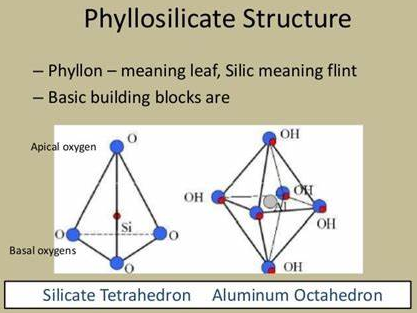clay
Clay is a type of fine-grained natural soil material containing clay minerals. Clays develop plasticity when wet, due to a molecular film of water surrounding the clay particles, but become hard, brittle and non–plastic upon drying or firing. Most pure clay minerals are white or light-coloured, but natural clays show a variety of colours from impurities, such as a reddish or brownish colour from small amounts of iron oxide.
Clay is the oldest known ceramic material. Prehistoric humans discovered the useful properties of clay and used it for making pottery. Some of the earliest pottery shards have been dated to around 14,000 BC, and clay tablets were the first known writing medium. Clay is used in many modern industrial processes, such as paper making, cement production, and chemical filtering. Between one-half and two-thirds of the world's population still live or work in buildings made with clay, often baked into brick, as an essential part of its load-bearing structure.
Clay is a very common substance. Shale [页岩], formed largely from clay, is the most common sedimentary rock. Although many naturally occurring deposits include both silts [沙泥] and clay, clays are distinguished from other fine-grained soils by differences in size and mineralogy. Silts, which are fine-grained soils that do not include clay minerals, tend to have larger particle sizes than clays. Mixtures of sand, silt and less than 40% clay are called loam [壤土]. Soils high in swelling clays, which are clay minerals that readily expand in volume when they absorb water, are a major challenge in civil engineering.
Traditional uses of clay as medicine goes back to prehistoric times. An example is Armenian bole, which is used to soothe an upset stomach. Armenian bole, also known as bolus armenus or bole armoniac, is an earthy clay, usually red, native to Armenia. Some animals such as parrots and pigs ingest clay for similar reasons. Kaolin clay [高岭土] and attapulgite have been used as anti-diarrheal medicines. Palygorskite or attapulgite is a magnesium aluminium phyllosilicate.
Phyllosilicate, formerly called disilicate, is the most common class of soil minerals. It is also known as layer silicate [硅酸盐]. It compounds with a structure in which silicate tetrahedrons (each consisting of a central silicon atom surrounded by four oxygen atoms at the corners of a tetrahedron) are arranged in sheets.
In geometry, a tetrahedron (plural: tetrahedra or tetrahedrons), also known as a triangular pyramid, is a polyhedron [多面体] composed of four triangular faces, six straight edges, and four vertex corners.
六级/考研单词: clay, molecule, particle, oxide, pottery, medium, cement, filter, seldom, indispensable, deposit, differentiate, swell, medicare, soothe, upset, indigenous, parrot, aluminum, compound, silicon, atom, oxygen, geometry, plural, triangle, pyramid, compose





 浙公网安备 33010602011771号
浙公网安备 33010602011771号